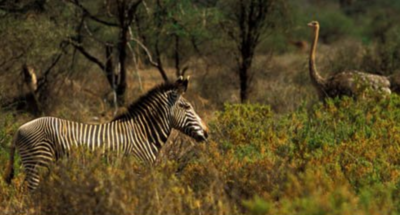
Collaboration among different species is common in nature. For instance, ostriches have sharp eyesight but poor hearing and weak sense of smell, while zebras have exceptional hearing and great sense of smell but bad eyesight. They form a symbiotic relationship to protect themselves from predators on the African savanna.
Drawing inspiration from symbiotic collaboration in nature, heterogeneous multi-robots can also work together to achieve tasks that are beyond the ability of each type of robots. However, this is challenging in several aspects. First, a high-level policy is required to reason about each robot's capability in a heterogeneous team. Moreover, the policy should plan long-horizon behaviors for each robot depending on its surrounding environment and the interaction between adjacent robots. Finally, it is desirable to have the collaboration emerge by itself rather than being handcrafted.
This project aims to address these challenges by developing an emergent collaboration framework for heterogenerous multi-robots. Specifically, we aim to develop an intelligent high-level policy for a team of Digit robots and Spot robots for rearrangement tasks in complex environments. The high-level policy can reason about the strengths and weaknesses of these robots and plan for long-horizon tasks in a symbiotic way.
Researchers
- Bike Zhang, UC Berkeley
- Akshara Rai, Meta AI
- Koushil Sreenath, UC Berkeley
Contact
- Bike Zhang, UC Berkeley, bikezhang@berkeley.edu
